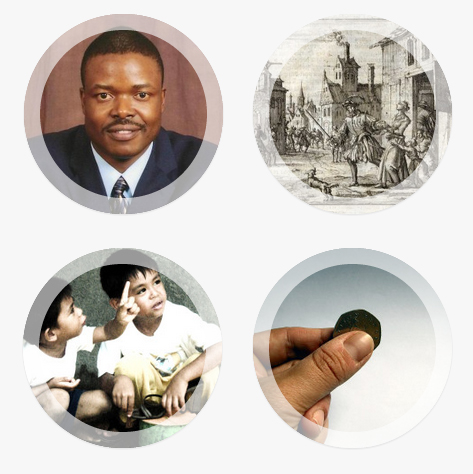Bearing Witness website gathers Anabaptist stories of struggle

A Congolese pastor who forgave the armed men who had forced him to dig his own grave; a Ukrainian Mennonite Brethren family displaced to labor camps throughout the USSR and finally reunited in Kazakhstan, only to face further resistance from the government in their new home; a missionary who accompanied Christian communities in China during World War II, even though she had to be in hiding much of the time.
These stories are part of a major story-gathering initiative called the Bearing Witness Stories Project, an online collection of testimonies of Anabaptist believers who have lived out their faith despite significant opposition and suffering.
Though still in its infancy, the website, www.martyrstories.org, serves primarily as a repository for stories of 19th- and 20th-century Anabaptists who have persevered in their faith and testimony, despite opposition and suffering.
For centuries, “Martyrs Mirror,” Thieleman van Braght’s 1685 collection of martyr stories, has been the main source for Anabaptist stories of costly discipleship.

While Martyrs Mirror remains inspiring and relevant, it does not include the testimonies of the Anabaptists who have also suffered for their faith in the years since 1685. Building on the spiritual legacy of Martyrs Mirror, the Bearing Witness Stories Project’s new website will gather and circulate these stories of costly discipleship within the Anabaptist global communion, extending from the 1500s to the present.
Bearing Witness aims to encourage faithfulness to the way of Jesus, while also strengthening relationships within the global Anabaptist church. Initiated by Goshen College’s Institute for the Study of Global Anabaptism (ISGA), the project is a collaborative endeavor with a steering committee that includes representatives from six different Anabaptist-related groups.
The website invites users to read the stories, while also providing opportunities for deeper and broader engagement. Stories can easily be shared via a variety of social media platforms, and a comment forum follows each story, allowing for further conversation.
John D. Roth, professor of history and director of the ISGA, hopes that the website will inspire people who are already deeply committed to a Christian ethic of peace as well as those who have been disappointed by more institutional forms of Christianity.
Roth also anticipates that the website will be helpful to churches. “I hope that the site could become a useful resource for teachers at church-related schools, Sunday School teachers, pastors looking for sermon illustrations, perhaps individuals looking for weekly inspiration/devotional material,” he said.
The website also hosts a blog which will explore issues of spirituality, gender, interreligious and ecumenical relationships, political advocacy and other themes that relate to the website’s growing story collection.
The stories come from Anabaptist faith communities from all over the world. One of the main purposes of the site is to elicit further storytelling, especially from communities who may not have yet had the chance to share their stories beyond a local or regional level.
“One Guatemalan church leader noted that the generation of Christians who lived through the Contra Wars of the 1980s is now aging,” said Roth. “His hope was that the project could provide a framework for his church to gather the stories of ordinary people who suffered deeply during those years.”
Anyone with a story to tell can submit it via the “Share a Story” form on the website. In this way the project is more than simply a story collection; it is also a tool for churches to explore their own histories through storytelling in a global context.
— By Elizabeth Miller ’06




